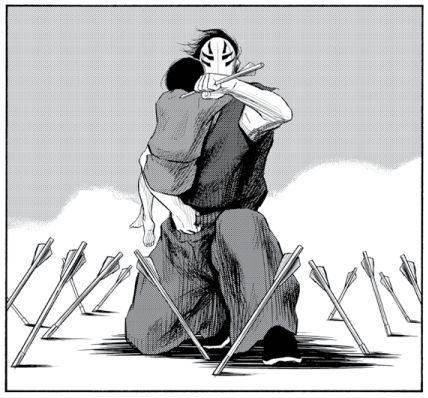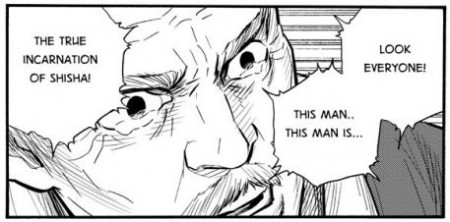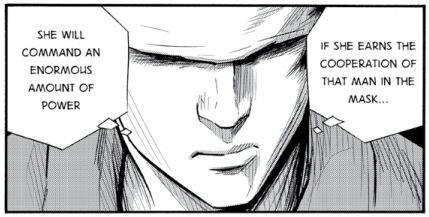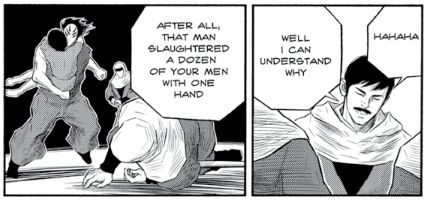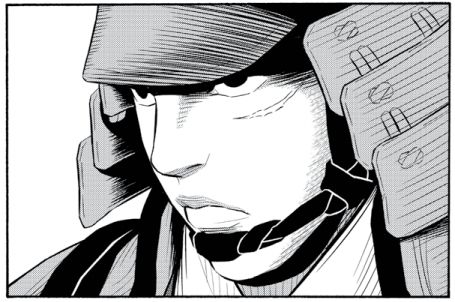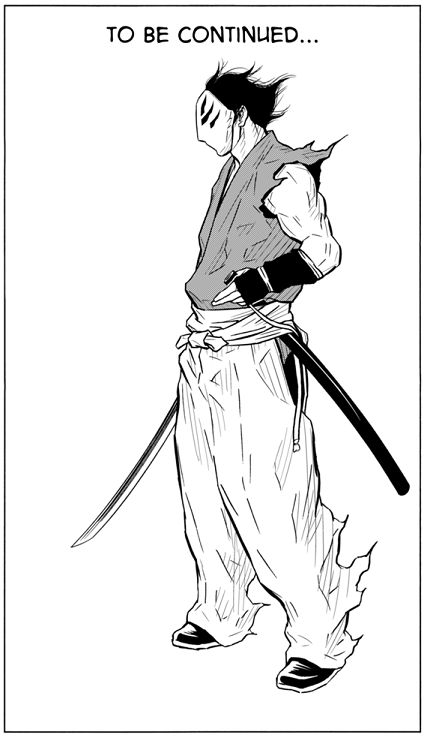Cheers for Kamen
One of the highlights of the first ten issues of Gen Manga, published from June 2011 through April 2012, was author Mihara Gunya’s epic fantasy manga Kamen (“Mask”). The epic scale battle story captivated readers until its abrupt cliffhanger “to be continued” ending in Gen Manga issue 10. Now, thankfully, readers can revisit and read more of the intriguing action tale thanks to the publication of the series’ first two collected volumes.
Kamen begins with a mysterious mute warrior awakening with a sentient mask affixed to his face. The symbiotic mask warns the man that removing the mask will bring about both of their deaths, so an enigmatic truce forms. When the nameless man encounters a passing military convoy, he’s seized and taken to Jiguzah Fortress. After demonstrating his martial arts prowess, the compassionate general of the fortress, Lord Simba, decides to release the man, giving him free roam of the fortress while she prepares her troops for a more pressing threat. Opposed not only by her own uncle, Lord Simba’s small garrison faces an impending siege by the much larger conquering Zoraiden army. The entire 225 page second volume illustrates the tactical siege, focusing on both strategic troop movements and intense, bloody individual battles.
Mihara Gunya manages an impressive feat by making Kamen an engrossing and fascinating story all while keeping the protagonist completely silent. Surrounding characters are sufficiently fleshed out, and “Kamen,” himself expresses himself explicitly through his actions. Both collected manga volumes introduce intriguing story elements including pivotal characters that are referenced only in introductions and both superhuman and supernatural warriors with hidden abilities. The story presented in the first 450 pages of the manga promises a grand scale with countless characters, relationships, conflicts, and betrayals, most of which are only hinted at thus far.
The manga’s visual design seems, at first, sparse, particularly due to its relative lack of detailed background art. However, critical examination reveals that Mihara Gunya’s selective eye illustrates only whatever most effectively evokes the important aspects of each scene. The focused illustration narrows the reader’s attention onto character reactions, sudden movements, burst of violence, contemplative solitudes. The art actually pulls the reader into the scene by excluding everything that could distract the reader’s attention. Furthermore, the sparse art actually enhances the setting’s barren, war-torn atmosphere in which everyone is either a peasant or a soldier, or sometimes both. The art style evokes a traditional Japanese woodcut aesthetic somewhat comparable to Hiroaki Samura’s Blade of the Immortal.
Gen Manga’s translation is fluid, natural, and easily comprehensible. Japanese sound effects are left unaltered. The printing is clean and crisp, obscuring no detail. Both print volumes include standard manga pulp paper with cardstock covers and a pleasant minimalist design inside and out that includes little overt branding and no supplemental advertising.
Readers that followed Kamen in the pages of Gen Manga will absolutely want to pick up at least the second graphic novel collection that contains an additional 203 pages of new story never before published anywhere. New readers that have enjoyed historical fantasy action stories such as Utawarerumono, Berserk, Blade of the Immortal, Bokko, and Claymore should find a lot of like in Kamen. In fact, the only significant negative aspect of Kamen is that there’s not enough of it.
